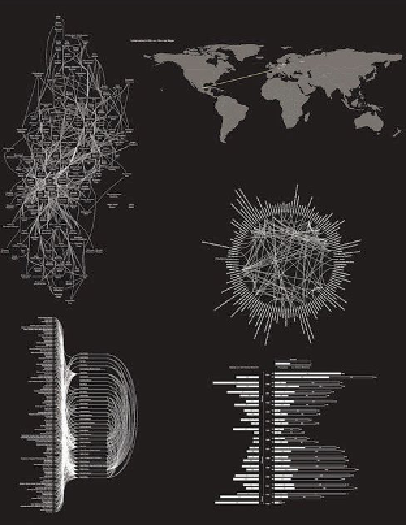Graphics Reference
In-Depth Information
ments. They are visible through the projection surface from beneath and are illuminated by in-
frared lamps (F). The camera (H) captures the reflected image of the underside of the projection
surface (C) from the mirror (D). An infrared filter blocks out the light of the projector, allowing only
the infrared light from the lamps (F) to pass through. The camera not only captures the image of
the markers, but also fingertips as they come in contact with the interactive tabletop. Because of
the matte surface, the fingertip is visible as a sharply defined point of light only when it is right
above the surface. The computer (J) processes the data from the camera and creates an anim-
ated version of the tabletop for the beamer (G). It then sends the current status of the table to
the computer (K), which controls the second beamer (A), which projects the second image of the
map onto the projection screen (B).
Infographic showing the interpersonal relationships of the Bauhaus members.
The main part of the exhibition was the interactive network archive. This was a digital
interactive tabletop, where visitors could combine the two outer parts with additional
information to examine biographical information and personal relationships of par-
ticular individuals, such as Walter Gropius and the artist Paul Klee. Here visitors can
explore the social network of selected characters. The table reacts to the placement

